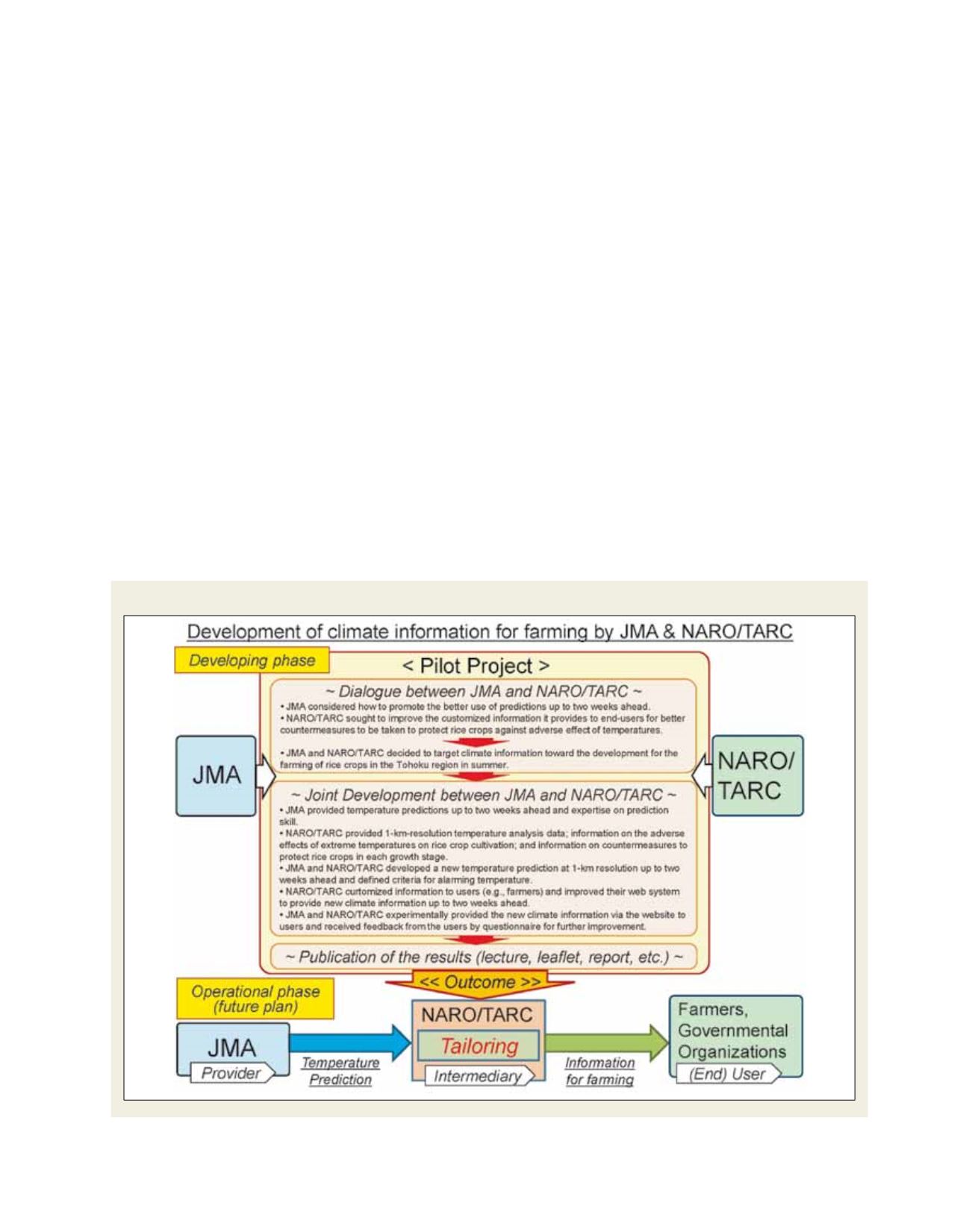

[
] 134
D
isaster
R
isk
R
eduction
a 1 km resolution covering the 30-year period from
1981 to 2010 (produced by NARO/TARC), and the
PDF prediction for regional-scale T7d anomalies on
the Sea of Japan side and the Pacific Ocean side of the
Tohoku region (produced by JMA).
JMA and NARO/TARC then discussed criteria for
alarming temperatures at which countermeasures
should be taken in consideration of related issues such
as the various growth stages of paddy rice, impacts
on its development and countermeasures to be taken.
The discussions in this phase were based on NARO/
TARC’s expertise and experience in agro-meteorology.
As a result, two criteria were defined: temperatures of
20° C or below from the middle of July to the begin-
ning of August, which increase the risk of sterility
in rice crops; and temperatures of 27° C or above in
August, which increase the risk of poor grain filling
in rice crops.
To evaluate the effectiveness of this new prediction
approach, JMA verified T7d prediction skill at a 1 km
resolution using hindcast experiment (re-forecast) data
for the 30-year period from 1981 to 2010. The predicted
values were compared to actual temperatures recorded at
17 surface stations in the Tohoku region, and the results
confirmed that the mean of the T7d predictions indicated
may increase the quantity of water to reduce the sterility effect
that low temperatures can cause
• Climate prediction information is considered useful for water
temperature control, as farmers require one to two weeks
to prepare for the water level adjustment countermeasure
mentioned above.
In the development phase, JMA and NARO/TARC first discussed
the content of new climate prediction information suitable for the
purposes at hand. JMA provided temperature predictions covering
the period up to two weeks ahead and expertise on prediction skill.
NARO/TARC provided:
• 1 km-resolution temperature analysis data formulated using JMA
observation and local geographical data
• Information on the adverse effects of extreme temperatures on
rice crop cultivation
• Information on countermeasures to protect rice crops in each
growth stage.
Based on these exchanges of information and expertise, JMA and
NARO/TARC developed a method to predict probability density
functions (PDFs) of seven-day mean temperatures (T7d) at a
resolution of 1 km for the Tohoku region covering the period up
to two weeks ahead. The T7d prediction was based on a combi-
nation of two data sets: the climatological normal of T7d with
Key processes of the JMA NARO/TARC pilot project
Source: JMA
















